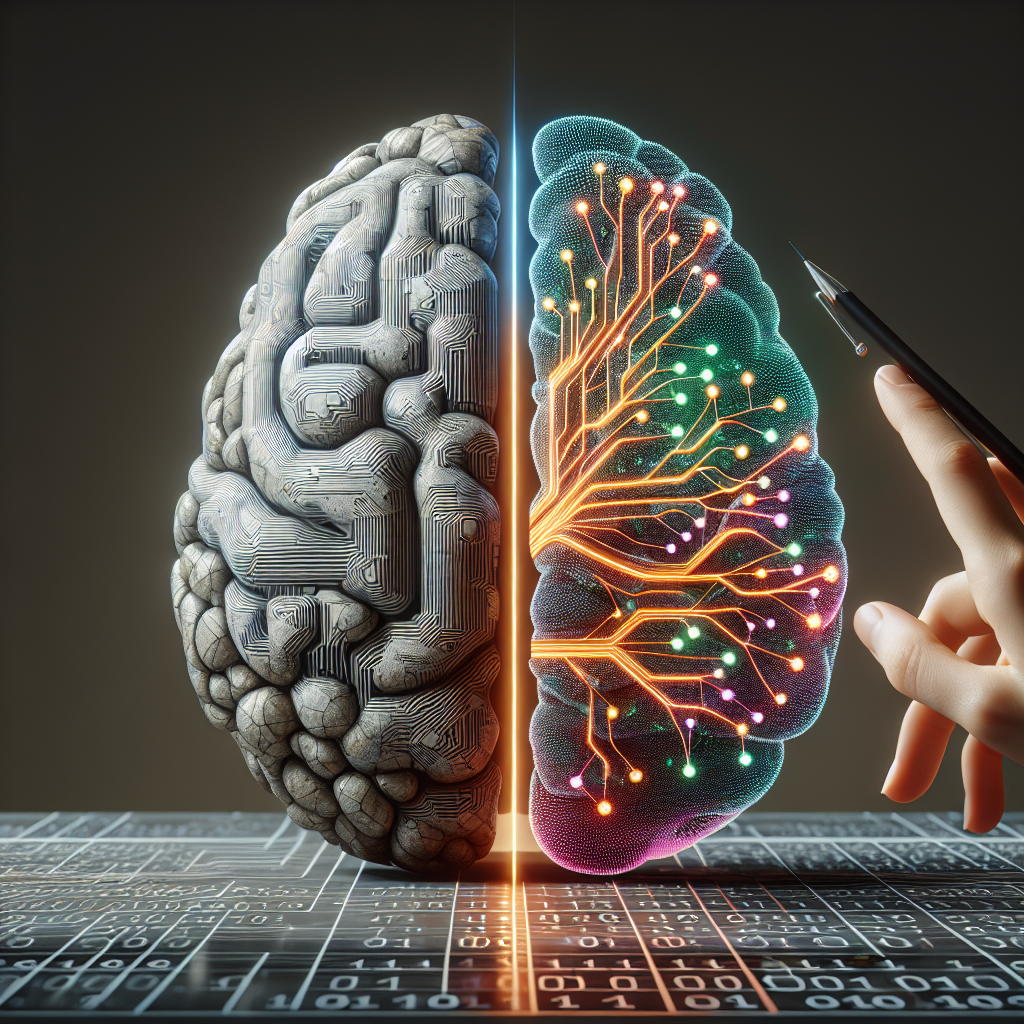In recent years, the intersection of generative artificial intelligence (AI) and neuroscience has become a burgeoning field of study. Generative AI refers to the branch of artificial intelligence that focuses on creating new content, such as images, music, or text, rather than simply analyzing or classifying existing data. Neuroscience, on the other hand, is the scientific study of the nervous system, including the brain, and how it influences behavior and cognition.
By combining insights from neuroscience with the capabilities of generative AI, researchers are uncovering new ways to understand and interact with the human brain. This interdisciplinary approach has the potential to revolutionize fields such as medicine, psychology, and artificial intelligence itself. In this article, we will explore some of the key developments in this exciting area of research and discuss the implications for the future.
Generative AI and the Brain
Generative AI algorithms, such as generative adversarial networks (GANs) and variational autoencoders (VAEs), have shown remarkable success in generating realistic images, music, and text that mimic human creations. These algorithms work by learning the underlying patterns and structure of a dataset and using this knowledge to generate new content. In the case of GANs, two neural networks are pitted against each other: one generates content, while the other evaluates its authenticity. This process continues until the generated content is indistinguishable from real data.
Neuroscience research has provided valuable insights into how the human brain processes and generates information. For example, studies have shown that the brain utilizes a predictive coding framework to anticipate sensory inputs and reduce uncertainty. This concept has been leveraged in generative AI models to improve their ability to generate realistic content. By incorporating principles from neuroscience, researchers have been able to develop more efficient and effective generative algorithms.
Applications in Healthcare
One of the most promising applications of the intersection of generative AI and neuroscience is in healthcare. Researchers are exploring how generative AI can be used to create personalized treatment plans for patients with neurological disorders, such as Alzheimer’s disease or Parkinson’s disease. By analyzing brain imaging data and genetic information, generative AI algorithms can generate simulations of how a patient’s brain may respond to different treatment options. This personalized approach has the potential to improve outcomes and reduce side effects.
In addition, generative AI can be used to create realistic simulations of brain activity, allowing researchers to study the effects of different interventions or therapies. By generating synthetic brain data, scientists can explore how the brain responds to stimuli and how neural circuits are altered in various conditions. This approach could lead to new insights into the mechanisms of neurological disorders and inform the development of novel treatments.
Enhancing Human-Computer Interaction
Another area where generative AI and neuroscience intersect is in the field of human-computer interaction. By understanding how the brain processes information and generates responses, researchers can develop more intuitive and responsive interfaces for technology. For example, generative AI algorithms can be used to create natural language processing systems that can understand and generate human-like text. This technology has the potential to revolutionize communication between humans and machines, making interactions more seamless and natural.
Furthermore, generative AI can be used to create realistic avatars or virtual agents that can interact with users in a lifelike manner. By incorporating insights from neuroscience, these virtual beings can respond to gestures, facial expressions, and emotions in a more human-like way. This technology has applications in fields such as virtual reality, gaming, and customer service, where realistic and engaging interactions are crucial.
Challenges and Ethical Considerations
While the intersection of generative AI and neuroscience holds great promise, there are also challenges and ethical considerations that must be addressed. One of the main challenges is the interpretability of generative AI models. Because these algorithms operate by learning complex patterns in data, it can be difficult to understand how they arrive at their outputs. This lack of transparency raises concerns about bias, fairness, and accountability in AI systems.
Another challenge is the ethical implications of using generative AI to manipulate or generate content. For example, the technology could be used to create deepfake videos or fake news articles that can deceive and manipulate the public. Researchers must consider how to mitigate these risks and ensure that generative AI is used responsibly and ethically.
Frequently Asked Questions
Q: How can generative AI and neuroscience be combined to improve mental health treatments?
A: By analyzing brain imaging data and genetic information, generative AI algorithms can generate personalized treatment plans for patients with mental health disorders. This approach has the potential to improve outcomes and reduce side effects by tailoring treatments to individual patients.
Q: What are some potential applications of generative AI in neuroscience research?
A: Generative AI can be used to create realistic simulations of brain activity, allowing researchers to study the effects of different interventions or therapies. By generating synthetic brain data, scientists can explore how the brain responds to stimuli and how neural circuits are altered in various conditions.
Q: How can generative AI improve human-computer interaction?
A: By understanding how the brain processes information and generates responses, researchers can develop more intuitive and responsive interfaces for technology. Generative AI algorithms can be used to create natural language processing systems and realistic avatars that can interact with users in a lifelike manner.
In conclusion, the intersection of generative AI and neuroscience is a rapidly evolving field with vast potential for transforming various industries. By combining insights from neuroscience with the capabilities of generative AI, researchers are uncovering new ways to understand and interact with the human brain. From personalized healthcare treatments to enhanced human-computer interaction, the possibilities are endless. However, researchers must also address challenges such as interpretability and ethical considerations to ensure that generative AI is used responsibly and ethically.

